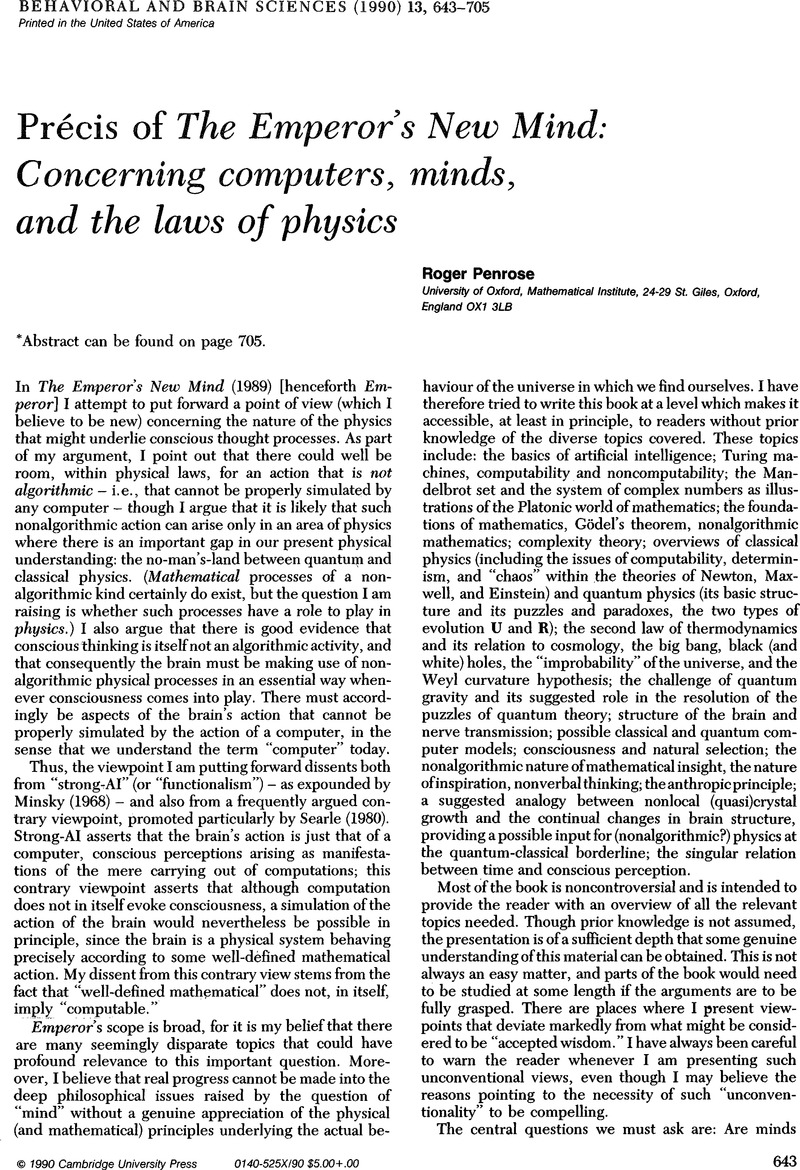Crossref Citations
This article has been cited by the following publications. This list is generated based on data provided by Crossref.
Davis, Martin
1993.
How subtle is Gödel's theorem? More on Roger Penrose.
Behavioral and Brain Sciences,
Vol. 16,
Issue. 3,
p.
611.
Squires, Euan J.
1993.
The incompleteness of quantum physics.
Behavioral and Brain Sciences,
Vol. 16,
Issue. 3,
p.
613.
Guccione, Salvatore
1993.
Mind the truth: Penrose's new step in the Gödelian argument.
Behavioral and Brain Sciences,
Vol. 16,
Issue. 3,
p.
612.
Wallace, Ron
1993.
Cognitive mapping and algorithmic complexity: Is there a role for quantum processes in the evolution of human consciousness?.
Behavioral and Brain Sciences,
Vol. 16,
Issue. 3,
p.
614.
Penrose, Roger
1993.
An emperor still without mind.
Behavioral and Brain Sciences,
Vol. 16,
Issue. 3,
p.
616.
Wilson, David L.
1993.
Quantum theory and consciousness.
Behavioral and Brain Sciences,
Vol. 16,
Issue. 3,
p.
615.



